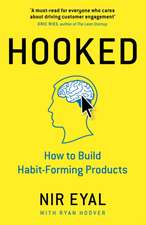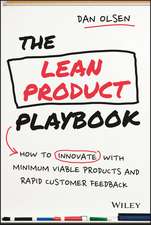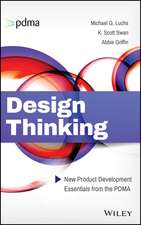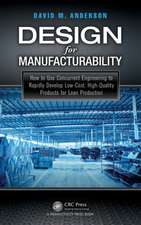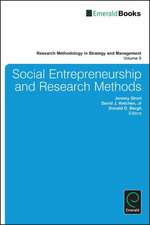Product Innovation, Interactive Learning and Economic Performance: Research on Technological Innovation, Management and Policy
Autor J.l. Christensen, Bengt–ake Lundvallen Limba Engleză Hardback – 13 dec 2004
In the book it is shown that product innovation is of major importance. For the economy as a whole, the introduction of new products is fundamental for economic growth. Process innovation without product innovation would sooner or later result in economic stagnation and in what has been called ‘technological unemployment’. In turbulent sectors product innovation is necessary for firms to survive and grow.
The book also shows that product innovation is a complex and multidimensional phenomenon. In order to capture this complexity authors combine different theoretical perspectives, different levels of aggregation, and different methodological approaches.
Preț: 949.65 lei
Preț vechi: 1233.31 lei
-23% Nou
Puncte Express: 1424
Preț estimativ în valută:
181.74€ • 187.49$ • 153.81£
181.74€ • 187.49$ • 153.81£
Carte tipărită la comandă
Livrare economică 05-19 martie
Preluare comenzi: 021 569.72.76
Specificații
ISBN-13: 9780762311569
ISBN-10: 0762311568
Pagini: 372
Dimensiuni: 155 x 234 x 559 mm
Greutate: 0.69 kg
Ediția:New.
Editura: Emerald Publishing
Seria Research on Technological Innovation, Management and Policy
ISBN-10: 0762311568
Pagini: 372
Dimensiuni: 155 x 234 x 559 mm
Greutate: 0.69 kg
Ediția:New.
Editura: Emerald Publishing
Seria Research on Technological Innovation, Management and Policy
Cuprins
Abbreviated. 1.Introduction: Product innovation - on why and how it matters for firms and the economy (B.-A. Lundvall, J.L. Christensen). Part I: Perspectives on learning. 2. The economics of knowledge and learning (B.-A. Lundvall). 3. Societal institutions, learning organizations and innovation in the knowledge economy (A. Lam). 4. The managed interaction between innovation and learning and a complementary perspective (R. Lund). Part II: Product innovation and interactive learning. 5. Product innovation and economic theory - user-producer interaction in the learning economy (B.-A. Lundvall, A.L. Vinding). 6. The organization of actors' learning in connection with new product development (R. Lund). 7. Human resources; absorptive capacity and innovative performance (A.L. Vinding). Part III: Industrial relations, HRM and the organization of product innovation. 8. HRM complementarities and innovative performance in French and British industry (E. Lorenz, J. Michie, F. Wilkinson). 9. Learning, knowledge and competence building at employee level in the UK (M. Tomlinson). 10. Some Danish experiences related to the organization of new product development (R. Lund). Part IV: Knowledge institutions, interactive learning and product innovation. 11. Interaction between firms and knowledge institutions (A.L. Vinding). 12. Public-private collaboration on knowledge generation and application in new product development projects (I. Drejer, B.H. Jørgensen). 13. Inter- and intraorganizational learning processes in the interaction between firms and patent offices (J.L. Christensen). Part V: Product innovation and economic performance. 14. Does product innovation and firm growth go hand in hand? (T. Reichstein).







